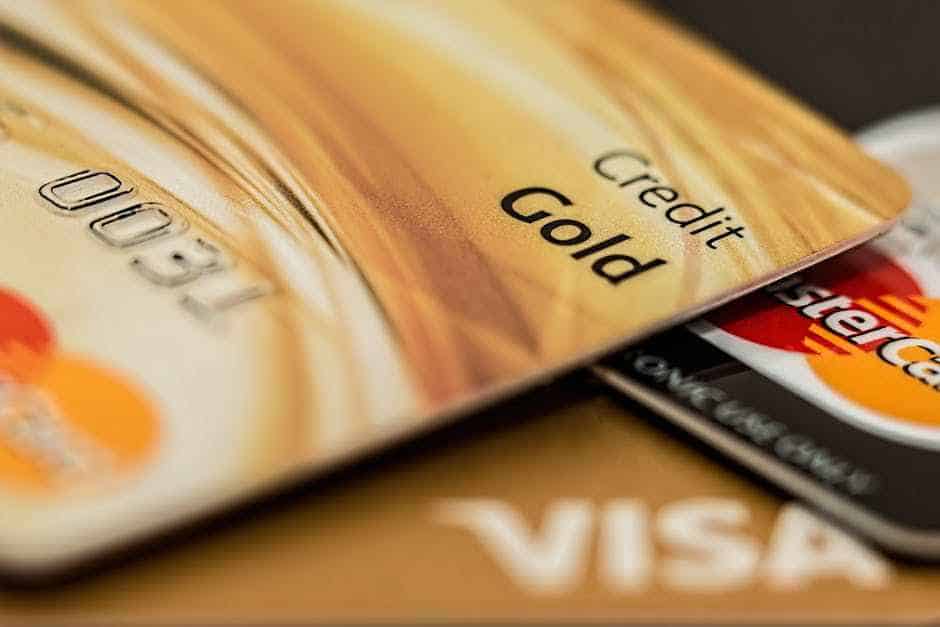Credit cards and other types of revolving debt have shot up nearly 20% from 10 years ago, crossing the $1 trillion mark. The average credit card balance is nearly $6,200 and many consumers have more than one.
This has led to many people making the minimum credit card payment every month. But is that a good way to handle your personal finance? Let’s look at how the minimum payment works and whether you should manage your outstanding balance this way.
What Does The Minimum Credit Card Payment Mean?
The minimum payment is the lowest credit card payment you can make towards your balance while still maintaining a “current” payment status. When you receive your credit card bill, the minimum payment will be listed along with all the other details.
The Credit Card Accountability Responsibility and Disclosure or CARD Act of 2009 dictates several things that must be disclosed by the card issuer. As a result, your credit card statement should provide details about how much you’ll pay in finance charges and how long it will take to pay off the full balance if you only pay the minimum every month. We’ll look at that more closely in a moment.
How to Calculate the Minimum Payment
You shouldn’t have to calculate the minimum payment yourself. It will be listed somewhere on the statement. Different credit card issuers have different ways of calculating the minimum payment so unless you have those details, you wouldn’t be able to calculate it yourself anyway.
How Do Credit Card Companies Determine the Minimum?
Credit card companies use a couple of different methods, depending on the issuer. The two most common are:
- Flat percentage
- Blended formula
The flat percentage minimum is a simple percentage of the outstanding balance. For example, if your balance is $1,000 and the minimum payment percentage is 3 percent, your minimum payment would be $30.
The blended formula treats the outstanding balance percentage and the interest calculation separately and combines the two into a minimum payment. For example, if you have the same $1,000 balance with a 1 percent minimum payment and 18 percent interest rate, the minimum payment would be calculated as follows:
$1,000 X 1% = $10
$1,000 X 18% = $180 / 12 months = $15
Add the two together and your minimum payment is $25.
How Much Is A Typical Minimum Payment?
There’s no “typical” minimum payment since it’s calculated based on the outstanding balance on your card. Your minimum will be a lot lower on a $100 balance than it would on a $10,000 balance.
Most card issuers do have a fixed minimum payment that would be the least you would pay. For example, they might not accept less than $15 as the minimum payment so if you owed $100 and they calculate the minimum at a fixed 3 percent rate, you would have to pay $15, not $3.
Should You Consider Making Minimum Payments On Your Credit Card?
Credit card companies and other lenders often promote the fact that you “only” have to pay the minimum amount every month. If you buy into their pitch, you can use your money in other ways while only paying them a small amount of what’s owing.
In reality, it isn’t quite that simple.
Yes, making the minimum payment will keep you current so you don’t get charged fees or damage your credit score with a late payment but it’s not a good way to manage your money. Credit card issuers are in the business of making money by charging interest after all.
Let’s look at the pros and cons of the minimum payment.
Benefits Of Making The Minimum Payment
While it doesn’t have a lot going for it, making the minimum payment on your credit card does offer a few benefits. These things are only benefits if you’re not in a position to pay more than the minimum though – they’re not reasons to make the minimum payment if you don’t have to.
The first reason you should only make the minimum payment is to avoid additional late fees. If you’re not able to make a larger payment, paying the minimum keeps your account current. If you pay nothing at all, most credit card companies will charge a fixed late fee that’s tacked on top of any interest you’re paying.
Depending on the balance you have outstanding, this can amount to a hefty percentage. And once the fee is added to your balance, it starts to accumulate interest along with the rest of the outstanding amount.
The second reason to make the minimum payment is to avoid damage to your credit score. Along with late fees, a late or missed payment will be a black mark on your credit report and can cause your credit score to drop.
Drawbacks To Paying The Minimum Amount
The benefits of the minimum payment are a bit of a safety net if you have to take advantage of them but there are many more drawbacks to paying the minimum amount. The biggest is the length of time it takes to pay off your credit card debt.
If you only make the minimum payment every month, it can take months or even years to pay off your card. And that’s assuming you don’t charge anything else on it once you pay some of it off.
While that balance is sitting on your card for all that time, you’ll be paying more and more interest as well. Credit card companies charge compound interest, which means the interest gets added to the balance and then more interest is charged on that interest.
Some credit card companies compound the interest monthly but some do it daily. Those cards can take a long time to pay off if you only pay the minimum amount.
If you use your credit card to pay bills, you could still be paying off last month’s electric bill 5 years from now.
Minimum Payment Example
Let’s look at an example to see how much of a difference the payment amount can make. Consider a $5,000 balance on a credit card with an 18.9% interest rate. We’ll assume the minimum payment is a fixed 2 percent of the total balance.
If you only pay the $100 minimum payment every month, it will take over 30 years to pay off the entire $5,000 balance and you’ll end up paying almost $20,000 with interest.
If you double that and pay $200 every month, the time to pay off the balance drops to a little over 11 years and you’ll end up paying less than half the total, roughly $8100.
A $600 monthly payment pays off the balance in 3.5 years with a total paid of just over $5700. And of course, paying a single $5,000 payment means it’s paid off in zero years with no interest at all.
Finally, while making the minimum payment can help protect your credit score, there’s still some risk if all you make is the minimum. One of the factors used to calculate your score is your credit utilization ratio or the percentage of the credit available to you that you’re using.
If your card is close to the credit limit and you’re only making minimum payments, your utilization ratio is going to remain high from month to month. This will usually result in a drop in your credit score.
What Happens If You Can’t Pay The Minimum?
So what happens if you’re in a tight spot and simply can’t make the minimum payment? Some or all of several things could happen.
First, you may be charged a late fee by the credit card issuer. These fees are detailed in your cardholder agreement so make sure you’re aware of what they are before missing a payment. You agreed to pay them when you accepted the card, regardless of how high they might be.
You might also find yourself paying a higher interest rate, especially if you miss more than one payment. Many credit cards have a clause in the agreement that states if you miss a payment for a certain number of months (possibly only one) that your interest rate will increase to a higher amount.
You usually have to maintain on-time payments for several months or a year to have it reduced back to the normal rate if that’s even an option at all.
Finally, your credit score could be impacted, especially if you miss more than one payment. Missed payments get reported to the credit agencies like Transunion and Equifax.
Tips for Lowering Your Credit Card Payment
If you want to lower your credit card payment but still pay more than the minimum, you have a few options.
The first is to qualify for another credit card with a lower interest rate, ideally with a no-interest offer for balance transfers. If you can transfer the balance to a card with no interest for the first few months, you can lower your payment while still paying off more of the outstanding amount every month.
Another debt management option is to find another source of funds to pay off the card. For example, you could get a loan from your bank or look at a home equity line of credit. These lenders usually charge much lower interest rates so you can lower your payment while still paying off more of the credit card balance.
One thing to watch out for is what many credit card companies call “payment holidays”. Your credit card minimum payment warning in one billing cycle might show as $0 with an exciting statement that you qualify for a payment holiday.
Don’t be fooled by this. They’re not doing you any favors, they’re just adding the minimum payment you’re not making back into the total and charging more interest. This should only be used to reduce your payment if you have no alternatives, such as being laid off from work.
Where to Turn for More Credit Card Advice
If you’re interested in finding a more effective card to help with lowering your minimum credit card payment, Lower My Bills can help. We offer lots of helpful advice about choosing the best credit cards for any situation. Visit our site today to learn more.



